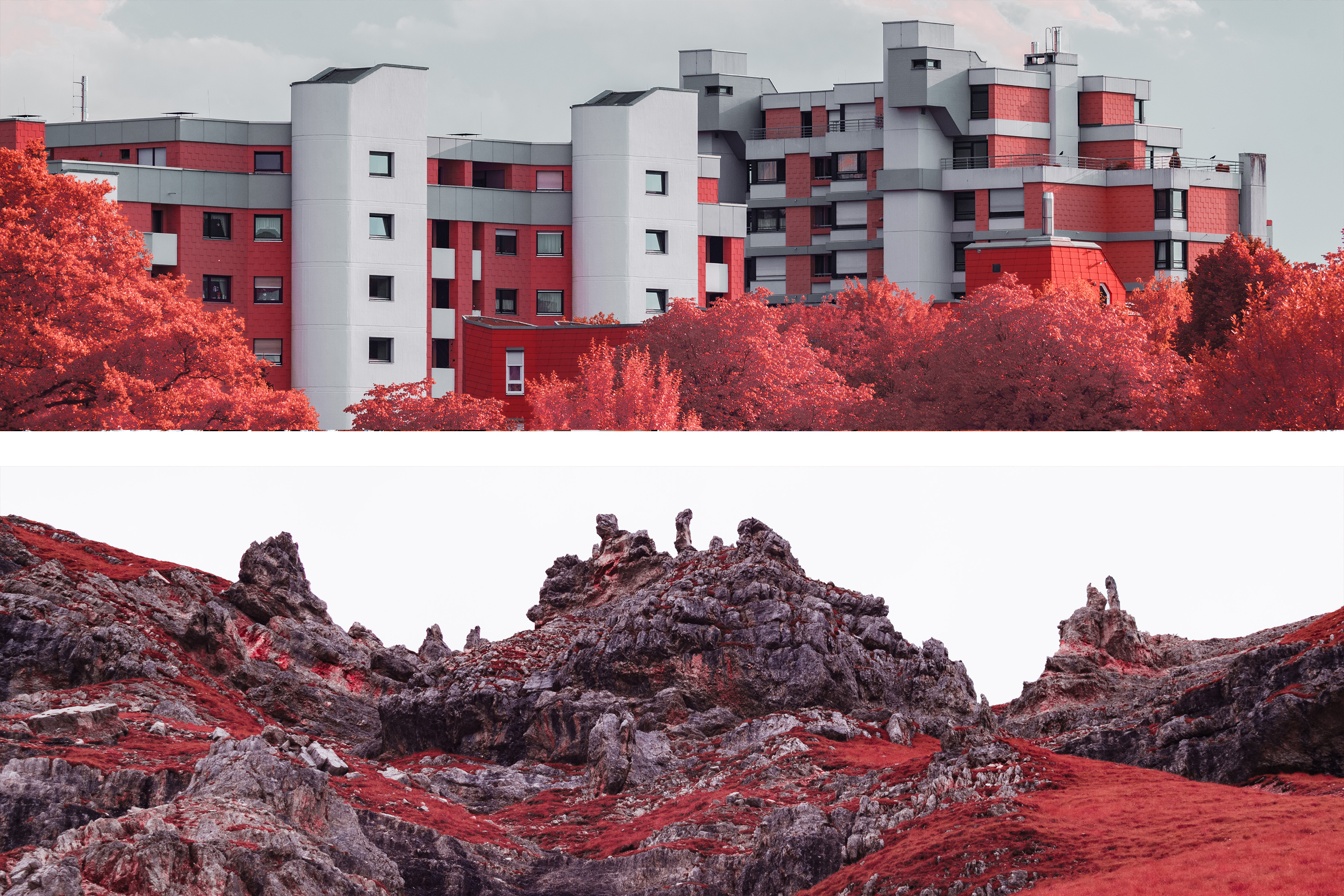All images by Roland Kraemer. Used with permission.
“Infrared imagery has something so otherworldly appealing to it that sparked an interest in me on how infrared photography is working,” says photographer Roland Kraemer. “I instantly wanted to know what I need to create such imagery. So I began to research for quite some time before I even started taking the first infrared images.” That’s the start of the Strange Series–a project from Roland that takes infrared photography to a level that so many have been working on for the past few years. Roland tells us that he shot and edited the images to taste. But the final, curated series looks like something almost out of the Twilight Zone. A hobbyist photographer, Roland looked to express himself in this series by showcasing the world as an extraordinary place amidst the COVID-19 Pandemic. So we got into his mind to talk about the series.
Be sure to follow Roland at his website, on Instagram, and on Behance.
“With a worldwide pandemic taking place these pictures were all taken during really strange times. Strange times for all of us. I just wanted to give this strange feeling I had in my gut over the last few weeks and months during the pandemic a visual representation in the form of a photographic series.”
Roland Kraemer
The Essential Gear of Roland Kraemer
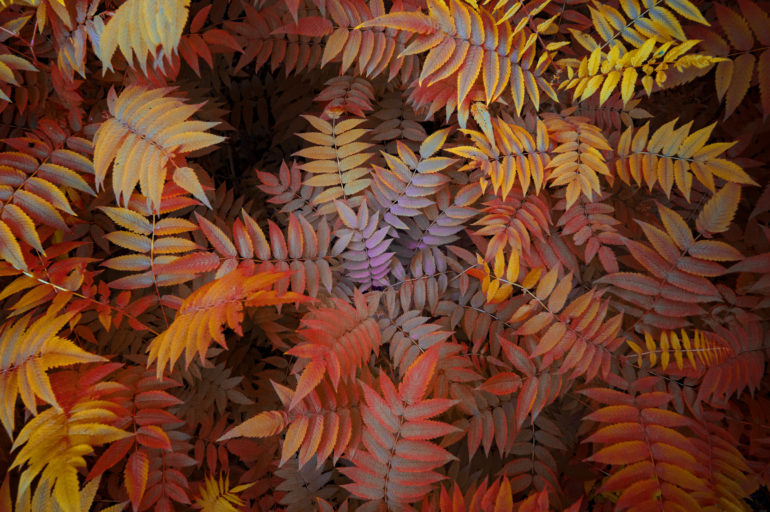
- A Modified Sony NEX 6 Camera
- 720mm circular filter
- 590mm circular filter
- Sony Zeiss 16-35mm f4
Roland says:
For the production of the ‘Strange Series’ I used a modified Sony Nex-6 camera body. The modification, in this case, is the removal of the hot-filter that is normally positioned in front of the sensor for image quality reasons. The hot-filter filters the infrared light and lets the visible light pass through. For infrared photography you want infrared light hitting your sensor.
To control how much visible light is hitting your sensor, you can use a variety of filters. While planing for the series I experimented with a 720nm and 590nm circular filter. These filters block the wavelengths of the visible light below 720nm and 590nm. In the end, I didn’t use any filter at all as I liked the look without one the best.
As for lenses I worked with a Zeiss 16-35 f4 that I mainly used for the wider top-down shots of plants. With the help of extension tubes I also used it for close-ups of lead structures. The second lens I used was a Sony 70-200 f4 that I used for the major part of the images. The long focal length of the lens enabled me to create clear, minimalistic, and reduced compositions. It’s also helpful to create abstract imagery as you’re able to get up really close on objects.
The lenses worked perfectly with the modified camera. Due to shooting the full spectrum, I could even use the autofocus of the Sony Nex-6. If one was shooting only the infrared spectrum, it could make sense to do a recalibration of the autofocus for the wavelengths of the infrared spectrum.
Roland Kraemer
Phoblographer: Talk to us about how you first got into photography.
Roland: Back in 2015 I was doing an internship for six months at a local film production company. After finishing the internship I received a full-frame mirrorless camera as a thank you gift – a Sony A7. I wasn’t sure if I should keep it or sell it as I wasn’t too much into photography back then.
I eventually decided to keep it and started shooting the forests and landscapes around the area I was studying at the time – the Black Forest in Southern Germany. This is where it all started. Since being a small kid I always had a really close connection to nature, so it felt kind of natural to photograph the things I love the most. The forests. The mountains. And everything in between.
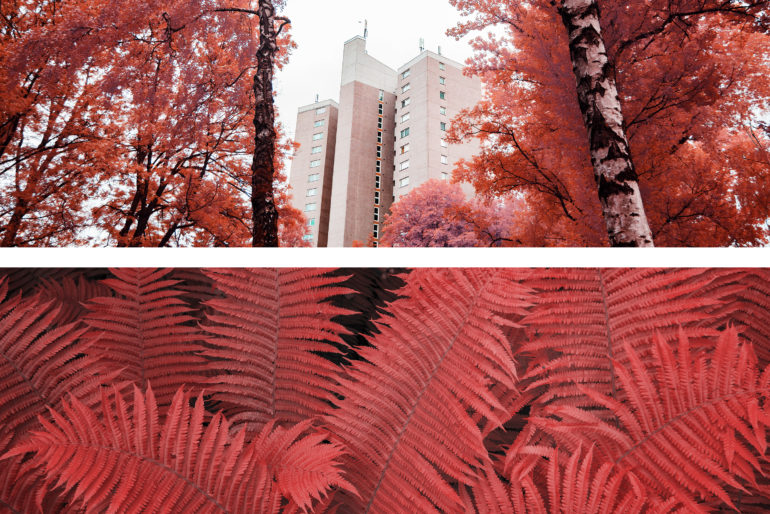
Phoblographer: What made you want to get into infrared work? Was it the completely different look of it all?
Roland: I am not sure what exactly made me want to get into infrared work, but I was always intrigued by the look of it. Infrared imagery has something so otherworldly appealing to it that sparked an interest in me on how infrared photography is working. I instantly wanted to know what I need to create such imagery. So I began to research for quite some time before I even started taking the first infrared images.
Besides my general interest in the aesthetics of infrared photography, I was heavily inspired by the works of the artists Reuben Wu, Al Mefer, and Paolo Pettigiani, who all work with infrared photography in their own unique ways. All of them are a big inspiration to me and influenced me in creating this piece of work.
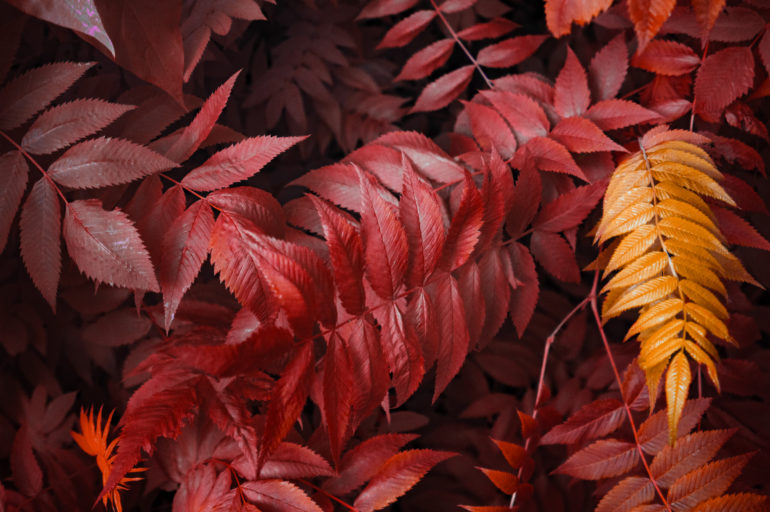
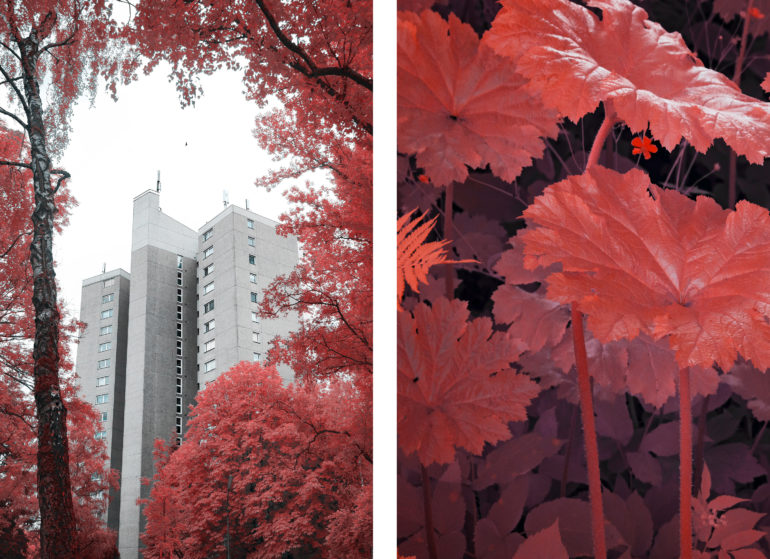
Phoblographer: Some of the shots from the Strange Series look very cinematic, some very painterly, and some very scientific. Where did your inspiration come from?
Roland: Besides the inspiration of the artists I already mentioned it was the natural and experimental process of creating these images that resulted in a visual concept that includes a mixture of cinematic, painterly, and even scientific styles. Like I always do I went with the flow while editing the pictures and stopped where the visual appearance of the image felt right to me.
The main goal for every single image of the series was to create something peculiar with the help of a strange object, a strange composition, a weird shape, or an unusual color combination. The images were also heavily influenced by my non-infrared photographic work as I was focusing on a lot of abstract, close-up, and long focal length compositions.
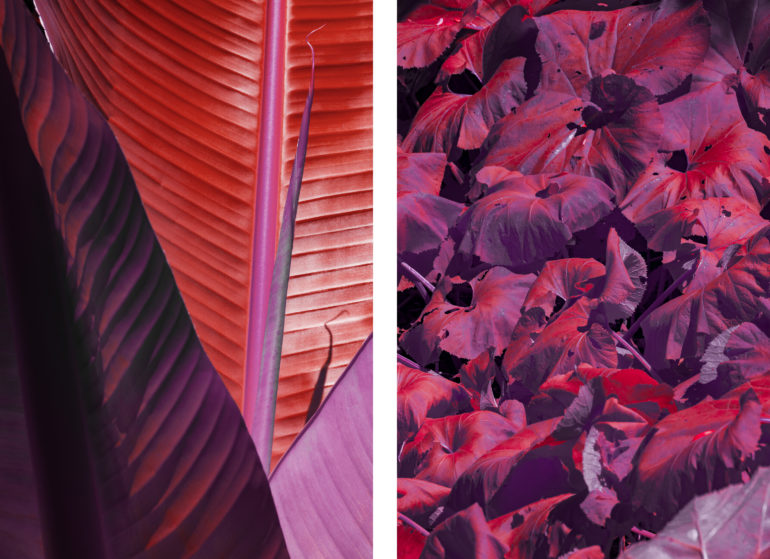
“The main goal for every single image of the series was to create something peculiar with the help of a strange object, a strange composition, a weird shape, or an unusual color combination.”
Roland Kraemer
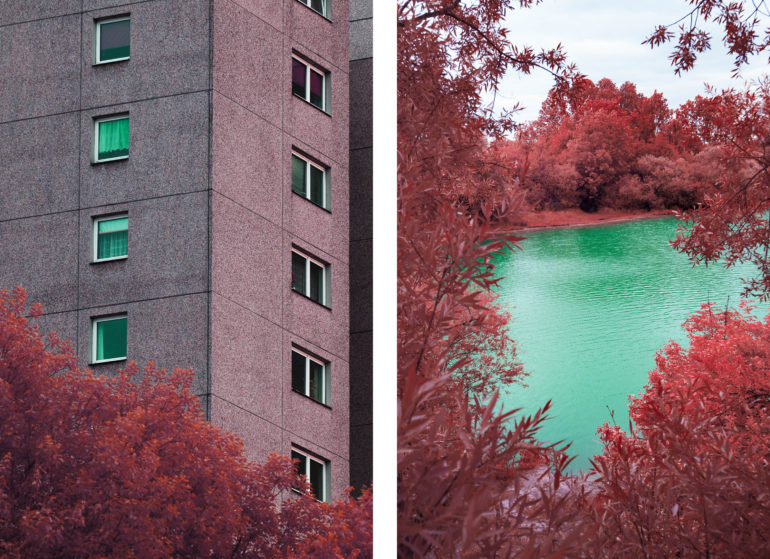
Phoblographer: Why no people? Some of these shots feel almost like they were out of Black Mirror or the Twilight Zone.
Roland: My photographic work focuses on minimalism, reduced patterns, and abstract structures. I rarely include people in my pictures unless it’s for scale. I applied the same concept to the “Strange Series.”
In addition, infrared photography works really well with the contrast between concrete and plants, as plants reflect the infrared light more than concrete due to the chlorophyll. That’s why I solely focused on a visual concept that juxtaposes urban life and nature. Seeing human objects without any humans gives the series an additional strange feeling.
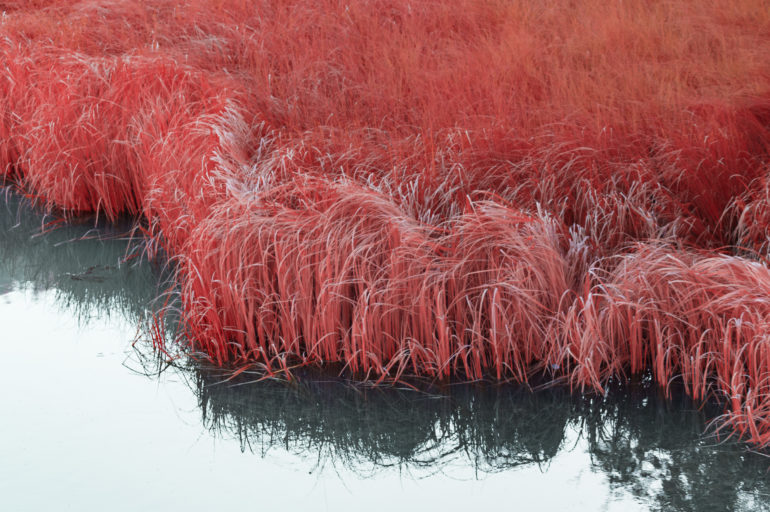
Phoblographer: Would you mind telling us about how this specific type of infrared photography works, please? Does the magic happen in-camera or in post-production?
Roland: The magic happens both in-camera and in post-production. With the help of a full spectrum camera (without any additional filters) you’re able to capture the combination of infrared light and the visible ’normal’ light. This results in a unique picture look with reddish bright tint. A mixture of a normal picture and an infrared one – both spectrums combined.
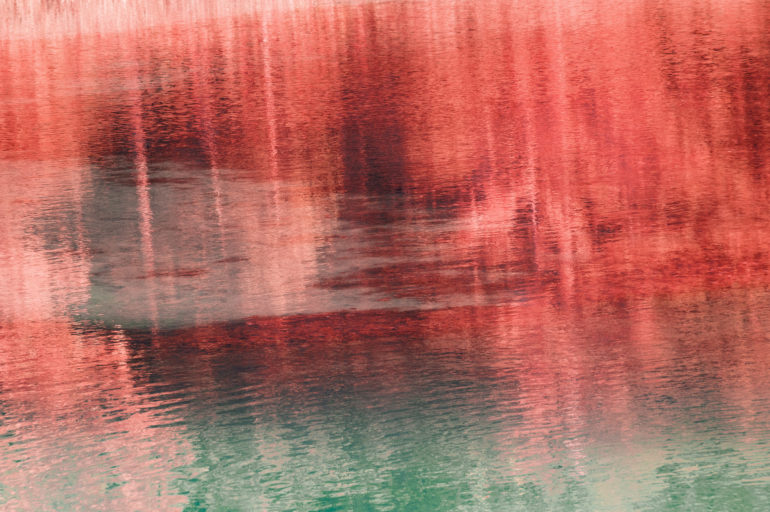
From there on the postproduction is really basic. I was playing around with Hue/Saturation/Color, the overall temperature of the image and the RGB-channels to get the final results.
What I learned while teaching myself the art of infrared photography is that there is not really just one way of producing and editing infrared photos. There are plenty and every artist has to find his or her own way that’s in line with the story he or she wants to tell.
Phoblographer: How do you feel you creatively express yourself with these images? Besides a sense of awe, what do you hope people feel from The Strange Place?
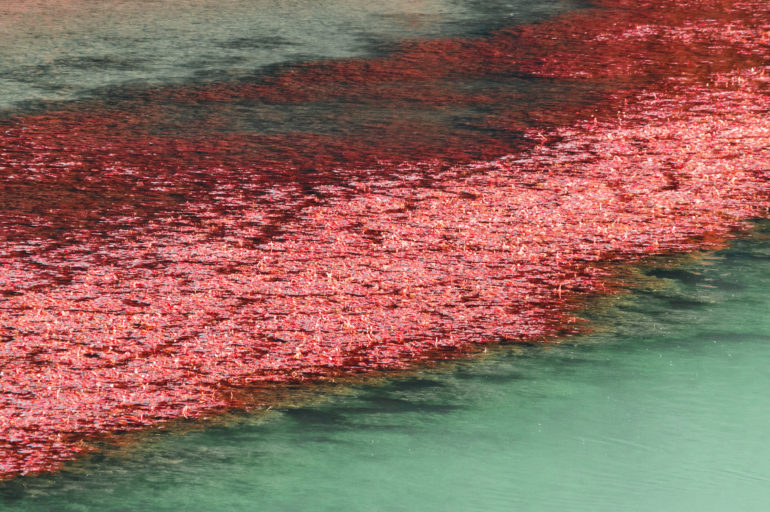
Roland: With a worldwide pandemic taking place these pictures were all taken during really strange times. Strange times for all of us. I just wanted to give this strange feeling I had in my gut over the last few weeks and months during the pandemic a visual representation in the form of a photographic series. Shooting objects close to where I live – plants & architecture.
I already experimented with infrared photography pre-COVID, but I thought this technique would be the perfect fit for a project that should stand for something so strange that doesn’t feel like reality – but still is.
There is no overall general feeling people should experience while viewing the pictures I just hope that this series enables the viewer to somehow relive the strange feelings we all had the past months in an artistic way.
“The magic happens both in-camera and in post-production. With the help of a full spectrum camera (without any additional filters) you’re able to capture the combination of infrared light and the visible ’normal’ light. This results in a unique picture look with reddish bright tint. A mixture of a normal picture and an infrared one – both spectrums combined.”
Roland Kraemer
Phoblographer: From looking at your Instagram, you’re mostly an adventure and landscape photographer. Do you plan on applying these techniques to the rest of your work or will this be a specialized tool for you?
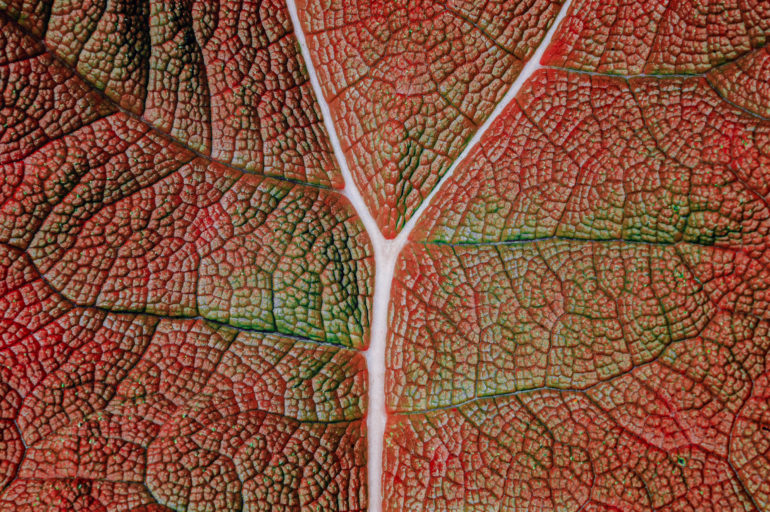
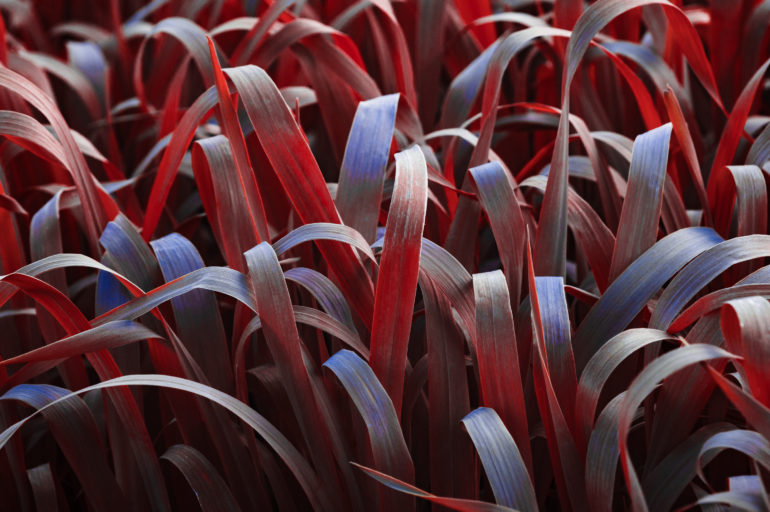
Roland: I am actually already working on various different projects where I am applying infrared techniques to basic landscape photography. So yeah, I will definitely keep on using this technique to other parts of my work. Still, I don’t want my whole body of work to be based on infrared photography. It will remain a special tool that helps me to bring projects to life that otherwise wouldn’t be possible with a ’normal’ camera. The next infrared series will be about various landscapes of the alps – from Germany to Italy.
Phoblographer: How do you see this helping you grow as a photographer and developing your creativity in the future?
Roland: Infrared photography is just a photographic technique that helps me visualize ideas I have in my head. I believe that being open to learning new skills and techniques is an essential ability you have to have in order to further develop your art.
Those skills and techniques are the ones that help you bring ideas to life and that’s what it’s about. Every new idea or project you finished lets you grow a little more. So does the ’Strange Series’.
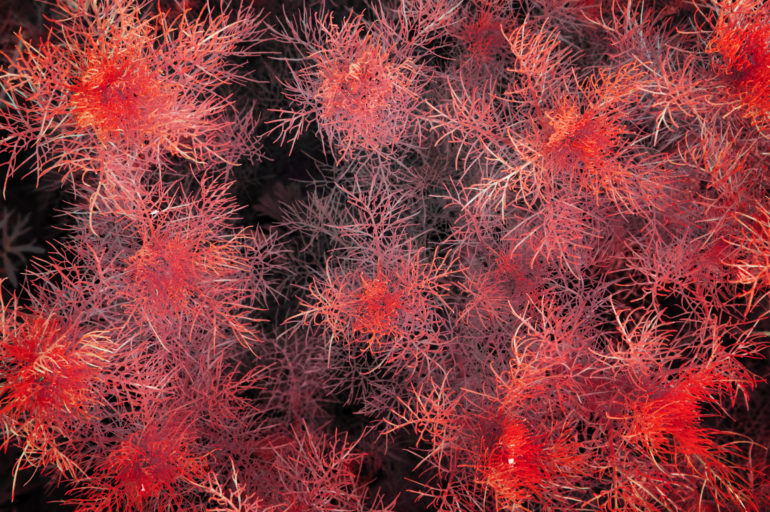
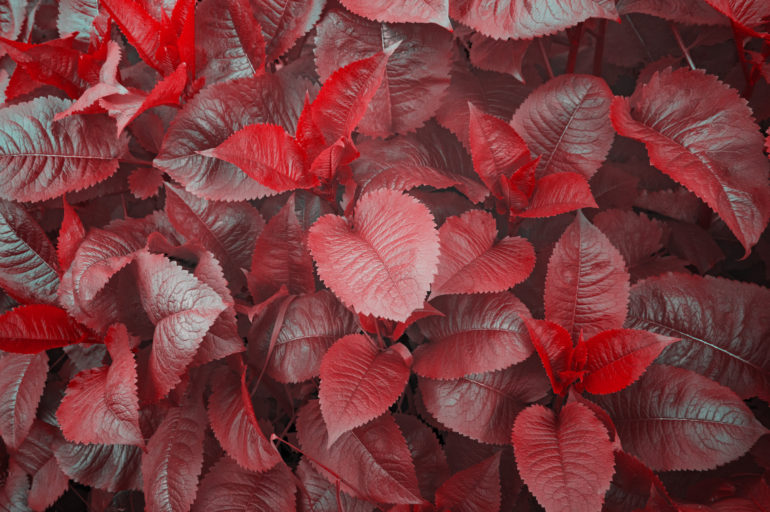
Phoblographer: Do you think you could ever become bored with this method?
Roland: Like with everything: When you mastered a technique you will eventually get bored of it and feel an urge to move on. I don’t think there will be an exception for infrared photography. I think that’s beautiful because it keeps pushing yourself to try out new and unfamiliar stuff that helps you develop and grow as an artist.
“I just hope that this series enables the viewer to somehow relive the strange feelings we all had the past months in an artistic way.”
Roland Kraemer


